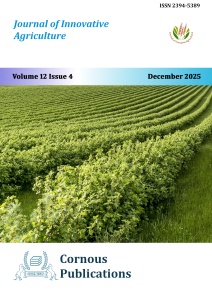
Journal of Innovative Agriculture
Peer Reviewed Open Access Journal
ISSN: 2394-5389 NAAS Rate: 4.05
Submit Manuscript
Peer Reviewed Open Access Journal
ISSN: 2394-5389 NAAS Rate: 4.05
Submit ManuscriptOPEN ACCESS | Published on : 31-Dec-2025 | Doi :10.37446/jinagri/rsa/12.4.2025.1-9 | Pages : 1-9
OPEN ACCESS | Published on : 31-Dec-2025 | Doi :10.37446/jinagri/ra/12.4.2025.1-9 | Pages : 1-9
OPEN ACCESS | Published on : 31-Dec-2025 | Doi :10.37446/jinagri/ra/12.4.2025.10-35 | Pages : 10-35
